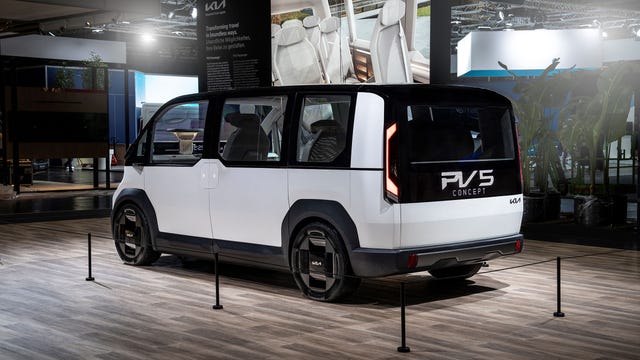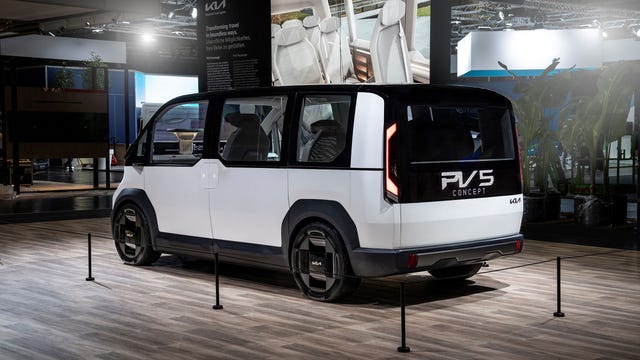Kia Introduces Battery-Electric Platform Beyond Vehicle (PBV) at IAA Transportation
Kia has brought its new battery-electric Platform Beyond Vehicle (PBV) to the IAA Transportation in Hanover, Germany, ahead of a European market launch in 2025. The automaker is entering the light commercial vehicle market with plans for a range of battery-electric vans and light trucks aimed at businesses of all sizes.
The purpose-built vehicle market has seen numerous startups emerge over the past decade, with some progressing to production, such as GM’s BrightDrop and Rivian’s Amazon vans. However, mass adoption by businesses remains elusive. Kia’s entry into this market comes as it seeks to capitalize on the anticipated commercial EV growth.

Kia’s first PBVs, the PV5 and PV7 models, are targeted at the passenger van market, which has traditionally been dominated by diesel models in Europe. These vans feature a new design direction for Kia, characterized by relatively short overhangs, low-set window sills, and ample headroom, making them suitable for markets like hotel shuttles.
“In order to disrupt the LCV market, an all-in approach is needed to maximize the benefits of a dedicated platform for a wide range of customers,” said Marc Hedrich, president of Kia in Europe. “While this approach is not new for electric passenger cars, it’s certainly the first time we see it for LCVs.”
Kia is betting on progressive exterior design, among other qualities, to differentiate itself from competitors, most of which are ICE models that have been on the market for some time. The PBVs promise quick recharge times of 30 minutes from 10% to 80% state of charge and come with built-in V2L capability, allowing them to power several electric tools simultaneously.
Fleet management is a significant aspect of Kia’s PBV business model. The upcoming PBVs will utilize the Kia Charge network, which offers 780,000 charging points in 28 European countries. Additionally, buyers will have access to the Ionity network, providing an extra 4,100 charging points across 24 countries on the continent.
All PV variants are based on a specially developed platform for LCVs that can accommodate different vehicle bodies. This flexibility allows Kia to offer various variants without significant changes to the underlying platform while providing business-focused interiors.
“This is a benchmark moment, and our PBVs are set to deliver better accessibility, higher volumes, and lower running costs, to completely change logistics and mobility,” Hedrich added.
Kia will face competition in Europe from established players like Stellantis, Mercedes-Benz, and VW when the PBVs start shipping next year. The trajectory of this segment remains in its early stages, with prices currently limiting the adoption of EVs in this niche.
Will battery-electric light commercial vehicles secure a significant share of the commercial market this decade, or will it take longer for EVs to gain traction in this segment?



